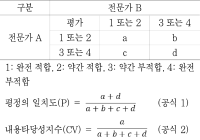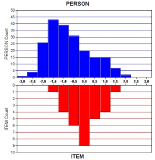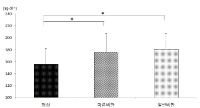PURPOSE This study presents policy implications for a Korean sports commission’s introduction and the strategies to realize it. METHODS As an important policy tool, a sports commission system attracts large-scale sports events, revitalizes local economies, and promotes the sports industry’s sustainable development. Such an introduction’s necessity and direction were explored through analysis of overseas cases and interviews with experts. First, the study examined the concept of a sports commission system, along with major overseas cases and derived policy implications to present a model suitable for Korea’s reality. RESULTS Introduction of a sports commission system requires reorganization of legal and administrative systems, strengthening the public-private cooperation model, convergence with the local tourism industry, and customized operation tailored to regional characteristics. In addition, future research directions include evaluating the system’s effectiveness after its introduction, operating customized commissions for each region, and developing sustainable models. CONCLUSIONS The results provide policy guidelines for successful introduction of the Korean sports commission system and can play an important role in establishing a foundation for development of the future sports industry and local economy. Furthermore, establishment of a comprehensive mid-to-long-term plan, including criteria for regional selection, organizational structure, and role distribution, should be prerequisite to introducing the system.
PURPOSE This study seeks to explore the subjectivity regarding leisure constraints perceived by college student-athletes. METHODS Based on Q methodology as an analysis framework, 25 Q-samples and 25 P-samples suitable for the research purpose were selected, and Q-classification and Q-factor analysis were conducted. RESULTS The leisure constraints were categorized into “Type Ⅰ: Psychological constraints,” “Type Ⅱ: Financial constraints,” and “Type Ⅲ: Spatio-temporal constraints.” The three types provided discussions on “strong athlete identity of student-athletes,” “role conflict between students and athletes,” “core competencies of student-athletes,” “current student-athlete support project,” and “school sports camp training.” CONCLUSIONS College student-athletes’ leisure constraints are closely related to strong athlete identity, anxiety about enjoying leisure, cost burden, and closedness of camp training, and each type provided new perspectives on discussions related to Korean student-athletes.
PURPOSE This study aims to develop a coach presenteeism scale with scientifically proven reliability and validity. METHODS In order to achieve the research purpose, preliminary questions were drafted using previous studies (Lee & Kim, 2022) and existing presentation questionnaires (SPS-34, SPS-6, SPS-13). The preliminary set of questions was composed of 23 questions, which were deliberated through a meeting with subject experts. After which, a survey involving 183 coaches was conducted. In this study, statistical verification procedures were conducted through construct validation, exploratory factor analysis, confirmatory factor analysis, internal consistency analysis, convergent validation and discriminant validation. RESULTS Finally, a 2-factor (DRA 5 items, DTP 5 items), 10-item coach presenteeism scale was developed. CONCLUSIONS In this study, a scale with verified reliability and validity was developed to support and investigate the presenteeism phenomenon experienced by coaches. These may be used by coaches themselves to check their presenteeism status and may guide future research to effectively train athletes.

Purpose Common content knowledge(CCK) is composed of rules, techniques, and tactics. Such knowledge is a requirement for effective teaching of physical education (PE). There are, however, few validated tests of CCK. Thus, the purpose of this study was to develop a CCK test of soccer and evaluate the validity and reliability of the test using Rasch modeling (Rasch, 1980). Methods We developed thirty item common content knowledge test for soccer. Then, we used Rasch modeling to evaluate the validity and reliability of a test of soccer. Pre-service teachers (N=92) majoring in physical education and non-PE major (N=111) participated in this study. Results Thirty questions demonstrated good item-model fit. Moderately high internal consistency for person-ability and high internal consistency for item-difficulty are reported. Both Infit and Outfit statistics showed a good fit between the data and the Rasch model. Conclusions The analysis provides evidence to support the validity and reliability of this instrument as a CCK test of soccer. Limitations of the study were discussed and suggestions were provided to improve the test.


[Purpose] The present study attempted to verify the effectiveness of an early childhood physical health improvement program (subsequently in the present study, KICCE Early Childhood Health Improvement Program) developed in Korea by modifying and improving the Mission-X: Train Like an Astronaut program developed by NASA to be suitable for children of ages 4 and 5. [Methods] The subjects in the study were 679 children at 7 facilities in Seongnam city, Osan city, and Yongin city, of which 4 were daycares and 3 were kindergartens. The participant group consisted of 339 children, and the control group consisted of 340 children. The program consisted of total 24 activities 3 times a week over 8 weeks, of which 8 activities were related to nutrition and 16 activities were related to physical activity, and in the 9th and 10th weeks, the 16 physical activities were reconfigured and performed 3 times a week. Physical parameters and related fitness parameters were measured before and after the program, and an ANCOVA analysis was performed in which descriptive statistics and scores before the program were the covariate variables. [Results] The results show that first, growth statuses of participant children were in the upper middle section of the distribution, and second, of the 6 fitness developments, flexibility, balance, and quickness were improved, and in most areas, boys and below-normal-BMI group showed beneficial effects. [Conclusion] Thus, KICCE Early Childhood Health Improvement Program is conclusively proven to be effective for early-childhood physical development.
PURPOSE This study aimed to identify and establish ESG activity assessment factors tailored for sports brands, offering a foundational framework for fostering sustainability within the sports industry. METHODS A Delphi survey was conducted between December 1, 2022, and January 31, 2023, involving university professors, sports brand executives, ESG researchers, sports marketing majors , a nd sports brand influencers. Data were analyzed using SPSS WIN 24.0 and MS Excel, encompassing research subject classification, consistency verification, and empirical analysis. RESULTS The assessment of ESG activity evaluation factors of sports brands revealed that governance, social, and environmental dimensions ranked in descending order of relative importance. Among specific evaluation criteria, the adoption of employee ethics regulations was deemed paramount in the governance evaluation area, while support for stakeholder welfare and social well-being took precedence in the social evaluation category. In the environmental sector, the production and delivery of eco-friendly, durable products held the highest significance. Further analysis, considering the weighted priorities of all evaluation factors, emphasized the importance of factors, such as the adoption of employee ethics regulations, support for stakeholder welfare, social well-being, and the production and delivery of eco-friendly, durable products. Conversely, disclosure of company information and issues, support for the underprivileged, and general shareholders' meeting or agenda for the protection of shareholders' rights and interests ranked lower. CONCLUSIONS In summary, this study validates the role of governance (G) aspects within ESG activities for sports brands, alongside environmental and social dimensions. It highlights the importance of a balanced ESG framework, particularly in an era marked by heightened social responsibility awareness among consumers. Prioritizing governance in marketing strategies not only distinguishes sports brands but also necessitates impactful promotion and advertising efforts.

This study was designed to compare physical fitness, blood lipids, and insulin resistance according to body mass index (BMI) and percent body fat (%BF) in 20s females. Sixty women, aged 20-29 yrs, volunteered to participate in the study as subjects. There were three groups, i.e., normal group (BMI < 24 kg·m-2 and %BF < 25%; n = 25), normal weight obese group (BMI < 24 kg·m-2 and 28% < %BF < 40%; n = 22), and obese group (BMI > 26 kg·m-2 and 30% < %BF < 40%; n = 13). Physical fitness, blood lipid profiles, and surrogate indices of insulin resistance were measured and compared among three groups. Main results of the present study were as follows: 1) There were significant differences in all variables regarding body composition among three groups. All values were lowest in normal group and highest in obese group. 2) There was significant difference in sit-and-reach among three groups, whereas no significant differences were found in other variables regarding physical fitness among three groups. 3) There were significant differences in all variables regarding blood lipids among three groups. In particular, total cholesterol (TC), low density lipoprotein cholesterol (LDL-C), TC/HDL-C ratio, and LDL-C/HDL-C ratio were significantly higher in normal weight obese group than normal group. 4) There were significant differences in all variables regarding insulin resistance among three groups. Fasting plasma glucose and HOMA-IR were lowest in normal group and highest in obese group. It was concluded that there would be abnormal blood lipid profiles and insulin resistance in even normal weight obese individuals as well as general obese individuals in 20s females.

